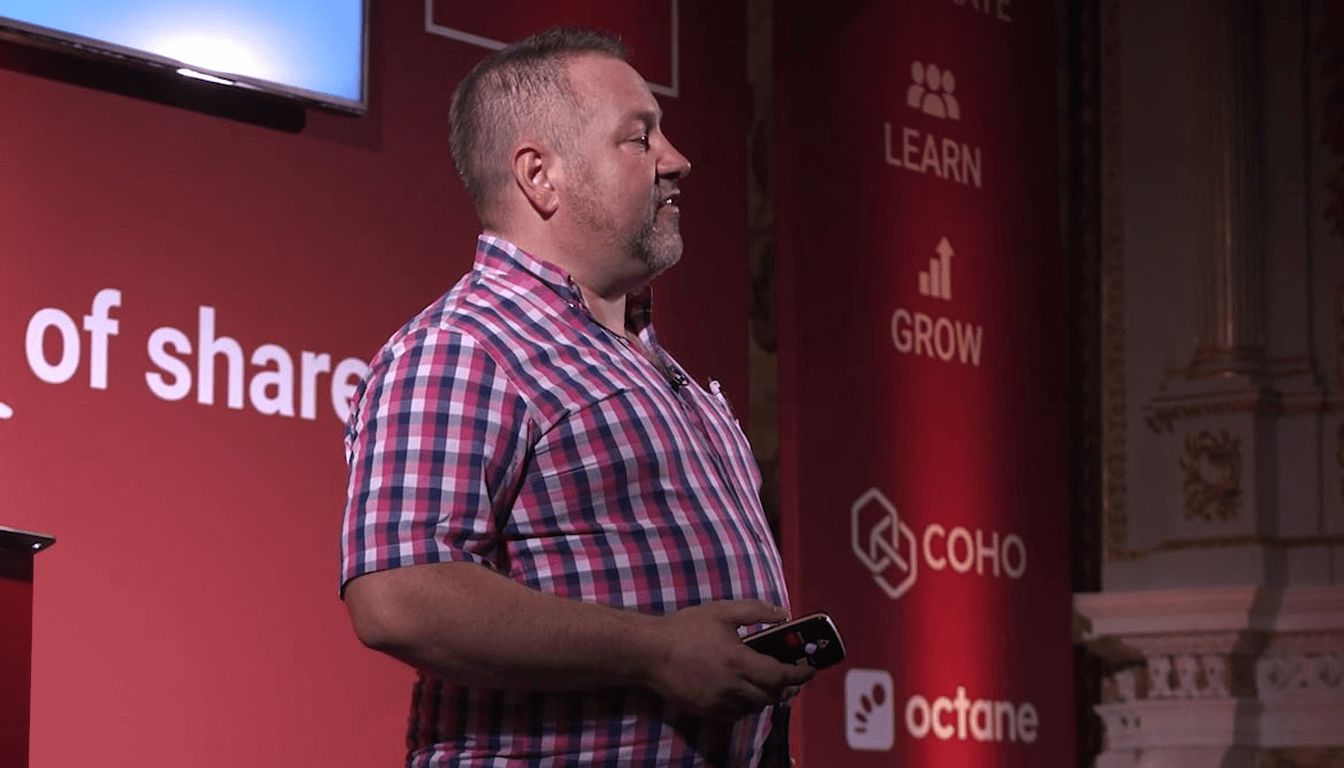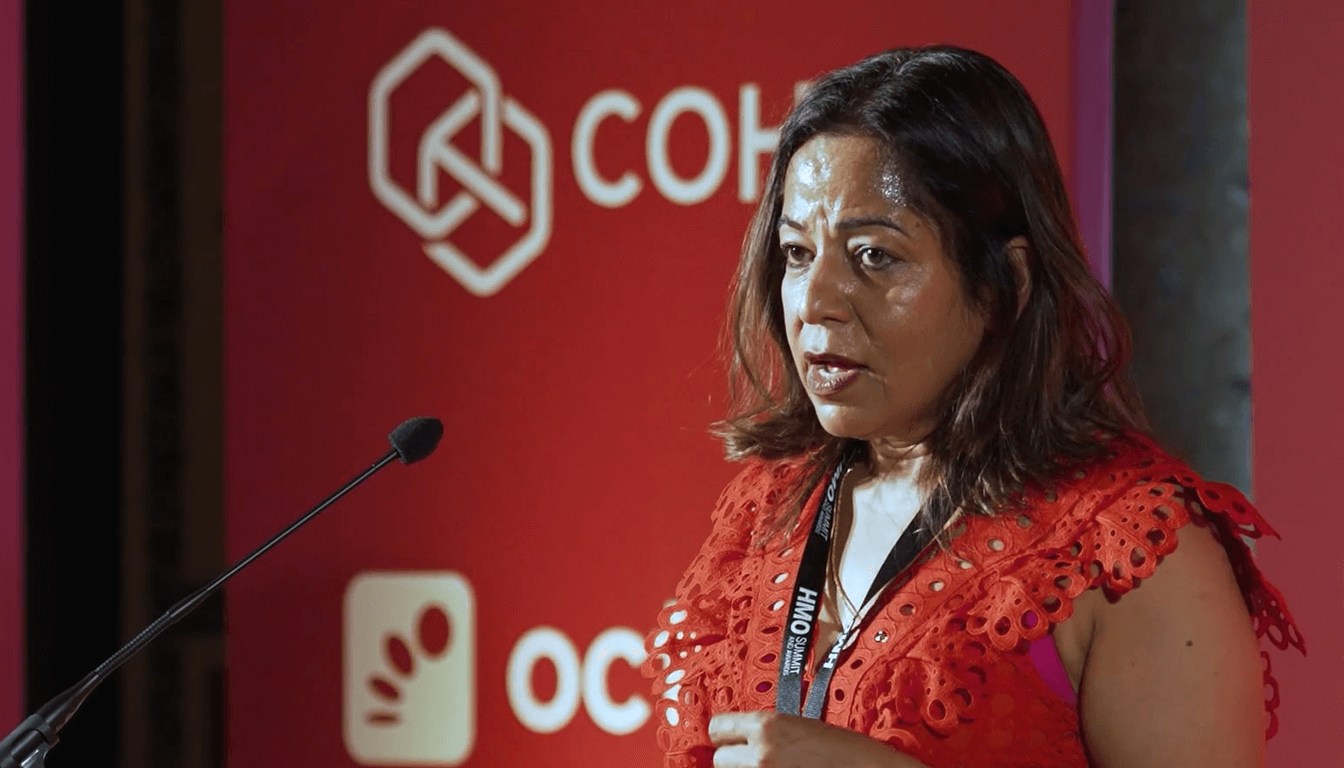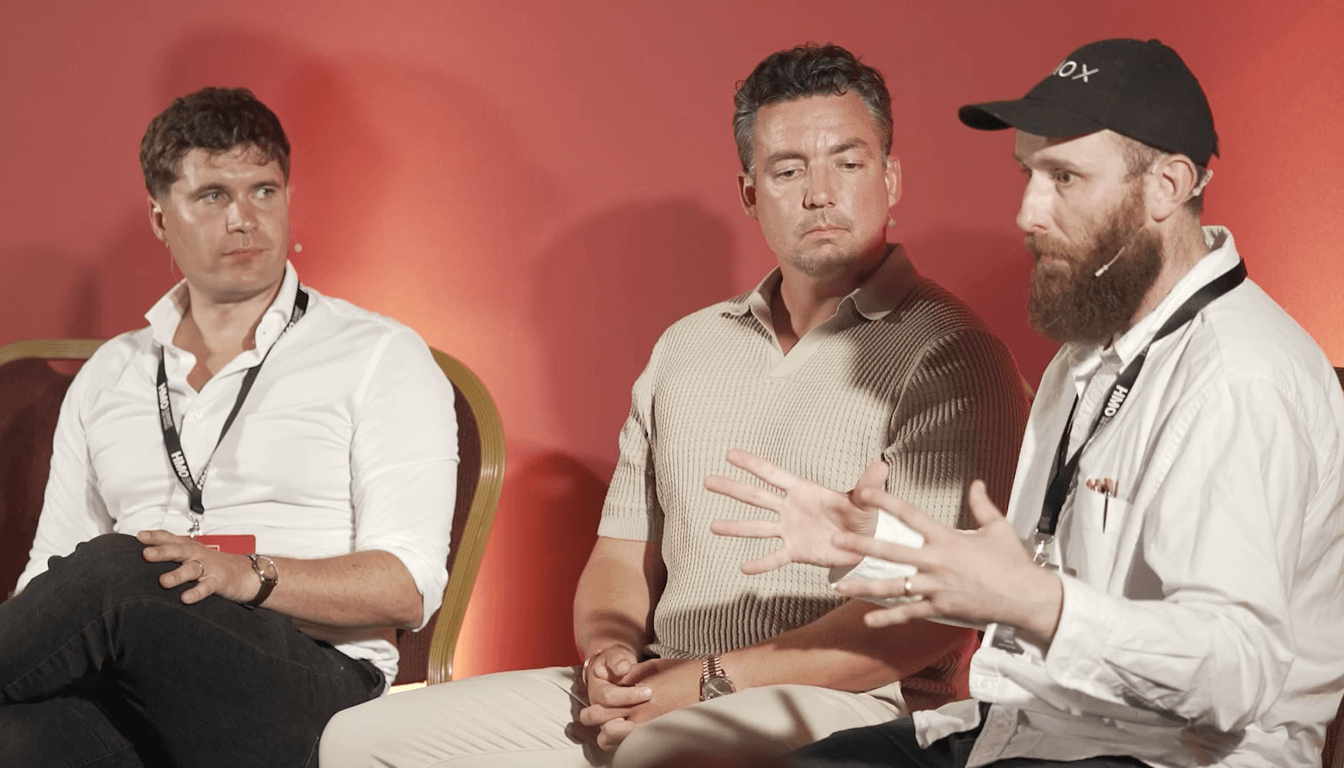Insights from Williams Johnson, Co-Founder of B-Hive Living.
The UK rental market is undergoing a seismic shift. What used to work in the property sector even five years ago is no longer a recipe for success today. At the recent HMO Summit, Williams Johnson—co-founder and CEO of B-Hive Living—delivered a compelling talk about how shared living is evolving and how operators must adapt to the new demands of renters, technology, and institutional competition. This blog explores those insights in depth.
A Rental Market in Transformation
Since 2000, the UK rental market has doubled in size. But more telling than growth is the composition of that growth: private renting has surged by 20%, while homeownership has declined by 3%. This signals not just economic shifts, but a generational transformation in how people approach housing.
One of the most significant trends is the rapid rise in single-renter households. There are now over 18 million tenants in the UK, many of whom are living alone. For shared-living operators, this isn’t just a number—it’s an opportunity and a challenge. The modern renter is not just looking for affordability; they’re demanding quality, community, and flexibility in ways the traditional housing sector has rarely delivered.
Millennials and Gen Z Are Redefining Renting
Today’s rental market is increasingly shaped by Millennial and Gen Z tenants—demographics that are not just renters, but also entrepreneurs and market-makers. Johnson highlights how the most innovative shared housing platforms globally, including some of the largest in Europe and Asia, have been built by millennials who deeply understand their own generation’s values.
These renters want more than just a room. They want:
- Access over ownership: Renting is not a compromise but a lifestyle choice that affords them better quality and flexibility.
- Experience and community: With 49% of young adults in the UK reporting loneliness, social connection is a priority. Co-living spaces offer an antidote to urban isolation.
- Flexibility: With an average of 11 job changes expected in their lifetime, this generation demands fluid living arrangements that can keep up with their mobility.
- Tech-enabled convenience: From online reviews to smart home features, digital-first experiences are not a bonus—they are a baseline expectation.
Institutional Investment and the Battle for Differentiation
The growth of private renting has also attracted the attention of institutional investors. The UK is now the second-largest market globally for institutional-grade rental housing, behind only the U.S. The emergence of large-scale Build-to-Rent (BTR) schemes and purpose-built co-living developments means that independent landlords and small HMO operators are no longer the only players in town.
But while institutional investment brings scale and sophistication, it’s still early days. Less than 1% of private housing stock in the UK is institutionally owned. Small and mid-size operators still dominate—and have a unique opportunity to differentiate.
The challenge? Competing with £200 million portfolios with a £300,000 renovation budget. The answer? Outmaneuver them by focusing on what matters most: the customer experience.
Designing for the Future: The Rise of Co-Living HMOs
At the heart of Johnson’s message is the idea of transforming traditional HMOs into something far more meaningful: co-living HMOs. These aren’t just “glorified” shared houses. They’re fully reimagined rental experiences tailored to the modern tenant.
What Makes a Co-Living HMO Different?
- Design-Led Aesthetics: Think 3-star hotel interiors rather than secondhand furniture. Fit-outs at B-Hive Living rival serviced apartments in quality.
- Service Orientation: More than just bills-included, co-living HMOs offer curated social events, exclusive resident perks, and wellness add-ons.
Tech-Enabled Engagement: From mobile apps that allow room control and service booking to digital onboarding and maintenance requests, technology is embedded at every stage. - Community as a Strategy: B-Hive Living has mapped over 140 touchpoints in the resident journey to build what Johnson calls UCX—User Community
- Experience. It’s not about managing tenants. It’s about designing belonging.
From Housing to Hospitality: Selling an Experience, Not Just a Roo
B-Hive Living doesn’t see itself as a property company. It’s a lifestyle brand. The shift in mindset from landlord to host changes everything—from how properties are marketed to how residents are welcomed.
For instance, the B-Hive mobile app acts as a digital community hub: it connects residents to events, birthdays, shared interests, and local happenings. It streamlines communication, reducing administrative overhead while strengthening tenant engagement.
This focus on experience translates directly into results:
- 99.4% occupancy across properties
- 68% retention rate, even with short-term lease options
- 30–60% premium rents compared to peers in the same area
- 93% of residents say they feel deeply connected to housemates
- 73% report improved well-being within three months
- Competing with Big Players—And Winning
Johnson underscores that B-Hive Living has achieved price-per-square-meter rates comparable to institutional assets—with a fraction of the investment. Their co-living HMOs are now seen as viable alternatives to hotels, serviced apartments, and even luxury BTR developments. The secret? They’re not just offering rooms. They’re offering purpose, lifestyle, and intentionality.
Serving Emerging Segments: From Expats to Digital Nomads
Another insight Johnson shares is the power of niche. Instead of broadly targeting “young professionals,” B-Hive Living has focused its efforts on high-yield, high-growth segments like:
- Mature professionals and expats: 85% of their residents are international, many relocating temporarily for work.
- Digital nomads and business travellers: These residents aren’t looking for a long-term flat—they want a community-rich, experience-led space where they can plug in and thrive.
This niche-first strategy enables premium pricing, stronger brand affinity, and better resident matching—all without overspending on acquisition or operations.
Leveraging Technology for Experience and Efficiency
From high-speed internet to smart thermostats and keyless entry systems, B-Hive Living uses technology to simplify both resident life and operational efficiency. They’ve even integrated occupancy sensors that help automate utilities, allowing tenants to control room settings remotely—from across the globe.
Johnson also highlights the potential of AI in transforming operations, marketing, and resident interaction. While the risks are real, the upside is enormous—especially for lean teams trying to scale.
It’s Not Just Change—It’s a Choice
In closing, Johnson offers a profound reflection: “Change is inevitable. But transformation is a choice.” For HMO operators and property investors, the future will belong to those who place tenants at the center of everything they do.
With a deep commitment to design, service, technology, and community, co-living HMOs like those at B-Hive Living aren’t just future-proof—they are future-first.
Whether you’re an investor, operator, or someone exploring new opportunities in shared living, the message is clear: focus on experience, not just square footage. Deliver connection, not just compliance. And build for the tenant of tomorrow, not the market of yesterday.
Insights from Williams Johnson, Co-Founder of B-Hive Living.
The UK rental market is undergoing a seismic shift. What used to work in the property sector even five years ago is no longer a recipe for success today. At the recent HMO Summit, Williams Johnson—co-founder and CEO of B-Hive Living—delivered a compelling talk about how shared living is evolving and how operators must adapt to the new demands of renters, technology, and institutional competition. This blog explores those insights in depth.
A Rental Market in Transformation
Since 2000, the UK rental market has doubled in size. But more telling than growth is the composition of that growth: private renting has surged by 20%, while homeownership has declined by 3%. This signals not just economic shifts, but a generational transformation in how people approach housing.
One of the most significant trends is the rapid rise in single-renter households. There are now over 18 million tenants in the UK, many of whom are living alone. For shared-living operators, this isn’t just a number—it’s an opportunity and a challenge. The modern renter is not just looking for affordability; they’re demanding quality, community, and flexibility in ways the traditional housing sector has rarely delivered.
Millennials and Gen Z Are Redefining Renting
Today’s rental market is increasingly shaped by Millennial and Gen Z tenants—demographics that are not just renters, but also entrepreneurs and market-makers. Johnson highlights how the most innovative shared housing platforms globally, including some of the largest in Europe and Asia, have been built by millennials who deeply understand their own generation’s values.
These renters want more than just a room. They want:
- Access over ownership: Renting is not a compromise but a lifestyle choice that affords them better quality and flexibility.
- Experience and community: With 49% of young adults in the UK reporting loneliness, social connection is a priority. Co-living spaces offer an antidote to urban isolation.
- Flexibility: With an average of 11 job changes expected in their lifetime, this generation demands fluid living arrangements that can keep up with their mobility.
- Tech-enabled convenience: From online reviews to smart home features, digital-first experiences are not a bonus—they are a baseline expectation.
Institutional Investment and the Battle for Differentiation
The growth of private renting has also attracted the attention of institutional investors. The UK is now the second-largest market globally for institutional-grade rental housing, behind only the U.S. The emergence of large-scale Build-to-Rent (BTR) schemes and purpose-built co-living developments means that independent landlords and small HMO operators are no longer the only players in town.
But while institutional investment brings scale and sophistication, it’s still early days. Less than 1% of private housing stock in the UK is institutionally owned. Small and mid-size operators still dominate—and have a unique opportunity to differentiate.
The challenge? Competing with £200 million portfolios with a £300,000 renovation budget. The answer? Outmaneuver them by focusing on what matters most: the customer experience.
Designing for the Future: The Rise of Co-Living HMOs
At the heart of Johnson’s message is the idea of transforming traditional HMOs into something far more meaningful: co-living HMOs. These aren’t just “glorified” shared houses. They’re fully reimagined rental experiences tailored to the modern tenant.
What Makes a Co-Living HMO Different?
- Design-Led Aesthetics: Think 3-star hotel interiors rather than secondhand furniture. Fit-outs at B-Hive Living rival serviced apartments in quality.
- Service Orientation: More than just bills-included, co-living HMOs offer curated social events, exclusive resident perks, and wellness add-ons.
Tech-Enabled Engagement: From mobile apps that allow room control and service booking to digital onboarding and maintenance requests, technology is embedded at every stage. - Community as a Strategy: B-Hive Living has mapped over 140 touchpoints in the resident journey to build what Johnson calls UCX—User Community
- Experience. It’s not about managing tenants. It’s about designing belonging.
From Housing to Hospitality: Selling an Experience, Not Just a Roo
B-Hive Living doesn’t see itself as a property company. It’s a lifestyle brand. The shift in mindset from landlord to host changes everything—from how properties are marketed to how residents are welcomed.
For instance, the B-Hive mobile app acts as a digital community hub: it connects residents to events, birthdays, shared interests, and local happenings. It streamlines communication, reducing administrative overhead while strengthening tenant engagement.
This focus on experience translates directly into results:
- 99.4% occupancy across properties
- 68% retention rate, even with short-term lease options
- 30–60% premium rents compared to peers in the same area
- 93% of residents say they feel deeply connected to housemates
- 73% report improved well-being within three months
- Competing with Big Players—And Winning
Johnson underscores that B-Hive Living has achieved price-per-square-meter rates comparable to institutional assets—with a fraction of the investment. Their co-living HMOs are now seen as viable alternatives to hotels, serviced apartments, and even luxury BTR developments. The secret? They’re not just offering rooms. They’re offering purpose, lifestyle, and intentionality.
Serving Emerging Segments: From Expats to Digital Nomads
Another insight Johnson shares is the power of niche. Instead of broadly targeting “young professionals,” B-Hive Living has focused its efforts on high-yield, high-growth segments like:
- Mature professionals and expats: 85% of their residents are international, many relocating temporarily for work.
- Digital nomads and business travellers: These residents aren’t looking for a long-term flat—they want a community-rich, experience-led space where they can plug in and thrive.
This niche-first strategy enables premium pricing, stronger brand affinity, and better resident matching—all without overspending on acquisition or operations.
Leveraging Technology for Experience and Efficiency
From high-speed internet to smart thermostats and keyless entry systems, B-Hive Living uses technology to simplify both resident life and operational efficiency. They’ve even integrated occupancy sensors that help automate utilities, allowing tenants to control room settings remotely—from across the globe.
Johnson also highlights the potential of AI in transforming operations, marketing, and resident interaction. While the risks are real, the upside is enormous—especially for lean teams trying to scale.
It’s Not Just Change—It’s a Choice
In closing, Johnson offers a profound reflection: “Change is inevitable. But transformation is a choice.” For HMO operators and property investors, the future will belong to those who place tenants at the center of everything they do.
With a deep commitment to design, service, technology, and community, co-living HMOs like those at B-Hive Living aren’t just future-proof—they are future-first.
Whether you’re an investor, operator, or someone exploring new opportunities in shared living, the message is clear: focus on experience, not just square footage. Deliver connection, not just compliance. And build for the tenant of tomorrow, not the market of yesterday.









